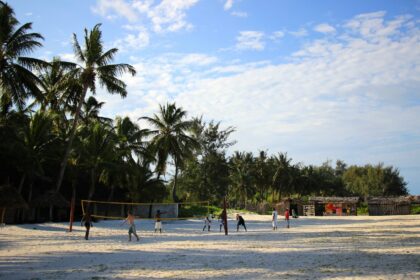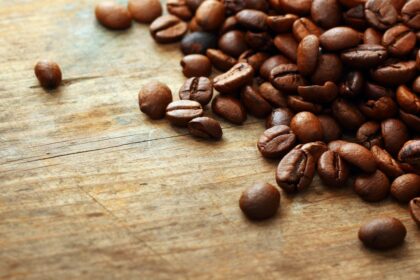
Minutes from Cape Town, Miles from the World.
This is the slogan of the Steenberg Hotel, a 5-star luxury hotel and winery in the beautiful Constantia Winelands — one of the most incredible destinations in South Africa.
While the tagline describes the hotel, it also perfectly captures the wine valley as a whole.
Despite the fact it takes less than 30 minutes to reach Constantia from Cape Town, you’ll find no indication of city life here as trendy restaurants, skyscrapers and traffic slowly transform into the slopes of the Steenberg Mountains, 17th-century farm buildings, and rows upon rows of Sauvignon Blanc and Chardonnay.

Steenberg Hotel
No trip to South Africa — especially if you’re in Cape Town — would be complete without a weekend spent in this slow-paced wine region, which was the first to produce South Africa wine in the country over 300 years ago. On a recent trip to the “Mother City” I had the pleasure of getting to experience the Constantia Winelands using Steenberg Hotel as my homebase. The Cape’s oldest farm, the Steenberg’s buildings date back to 1682 and are considered a National Heritage Site. The property is proud of their history and reference it regularly, for example, through their farm-to-table BistroSixteen82 restaurant and flagship Steenberg Brut 1682 Méthode Cap Classique, a sparkling wine composed of 100% Chardonnay grapes made using the same process as French Champagne.
While the buildings of the farm have been restored, they still have that rustic weathered look that makes you really feel like you’ve stepped back in time. Antique furnishings and charmingly creaky doors aside, The Steenberg provides an opulent experience from the accommodations to the food and wine to the staff and beyond. I was able to stay in their Premier Room, a spacious, modern alcove with a standalone tub, rain shower, flatscreen television, plush bedding, impressive pillow selection and a patio sitting right in the vineyards and provided unobstructed mountain views.

Around the property, which encompasses 204 hectares (504 acres), you’ll find many great places to explore — The Library featuring complimentary sherry and port with cases of books and photo compilations, the relaxing Ginkgo Spa offering everything from massages to facials tailored to your needs, and a Peter Matkovich 18-hole golf course that makes use of vineyards, pine forest and tranquil waterways for hazards. There’s also their newly renovated Catherina’s the Restaurant, an unpretentious fine dining experience with highlights like risotto, fresh sustainable seafood (they operate under the South Africa Sustainable Seafood Initiative) and high-quality meats paired with their Estate wines. A fireplace keeps diners warm when it’s chilly (Cape Town is known for experiencing four seasons in one day), while immersive artwork tells the story of the property’s original owner, Catharina Ustings Ras.
Originally from Lubeck, Germany, Catharina — just 22 years old when she made the boat journey — was a controversial figure, especially in 1662 when women had few rights. Keep in mind, this was a time when lashings, hangings and keel haulings were regular occurrences, so to give herself some protection she married a man named Hans Ras, whom she had several children with. When years later Hans was eaten by a lion, it is said Catharina jumped on a horse, gun in tow, to kill the lion (which, legend says, she did). Her next two husbands were also tragically killed — one murdered and the other trampled by an elephant. Luckily, her next husband lived long enough to purchase the farm we now know as the Steenberg and granted her a legal title deed.

Steenberg Winery
My favorite place at The Steenberg is the winery. Their signature grapes are Sauvignon Blanc and Semillon, and they’re one of the few wineries in South Africa to blend Semillon as a single grape varietal. All wines featuring the Steenberg label are estate wines, meaning they grow their own grapes right on the property. These grapes prosper greatly from their location, as they enjoy sea-facing slopes which benefit from both the Indian and Atlantic Oceans. This combined with the shading of the mountains allow the grapes to stay cool. Along with the other Constantia Winelands vineyards, Steenberg also enjoys mild temperatures, weather granite soils, reliable winter rainfall and optimal sunlight exposure, leading to high-quality grapes able to make delicious wines.
After touring their working cellar and seeing their cooperage, I head to the tasting bar to enjoy their Flagship Tasting (R40/about $4 USD), which allowed me to sample wines from their Super Premier Range as well as the Steenberg Brut 1682 Méthode Cap Classique, a Super Premium wine. While I’ve sampled their Méthode Cap Classique before and enjoyed its light body and crisp finish, their Pinot Noir MCC, with its beautiful bubbles trickling up the sides of the glass and frothy, refreshing texture adds a bit more excitement to my palate, especially as it’s rarer to have sparkling red wines (and even more rare to have them done well). Next we move on to the Sauvignon Blanc Reserve 2011, which features hand-picked fruits to retain maximum flavors and characteristics. I feel lucky to get to sample it, as the vines are 23 years old and will need to be replanted this year, meaning this is the final vintage for another eight years. My favorite of the wines, at least in terms of uniqueness, is the 2011 Semillon. The wine is creamy and full on the palate, with intense flavors of peace, lime and spice.
“At first I didn’t love the Semillon because it’s very heavy, but there was something about it that kept me coming back to try it again,” explains my winery hostess. “Now it’s my favorite Steenberg wine, especially when paired with shellfish or Thai curry as it leaves an oil curtain in your mouth that is divine.”

Next we’re on to the 2011 Nebbiolo, which is kind of like an Italian Pinot Noir in terms of the light color and earthy tones and has notes of prune and apricot. It’s a very niche wine, with intense tannins and acidity that give it a strong backbone and structure. The tasting ends with a sample of the Catharina Red 2009. This classic Bordeaux blend features 42% Cabernet Sauvignon, 30% Merlot and 28% Cabernet Franc for a full-bodied red with much to offer. While the Cabernet Sauvignon offers a rich earthiness, the Merlot adds in noticeable mineral tones. Then there’s the Cabernet Franc, which enhances the wine with its perfume and spice.
After the tasting there’s no way I can’t not buy a bottle, and am impressed by the prices. I opt to try a bottle I didn’t get to taste yet, a Klein Steenberg 2011 Cabernet Sauvignon which comes to $4 USD with my discount for doing the tasting. While in New York buying an inexpensive wine means you’ll be waking up with a headache, at Steenberg you’re still able to get a high quality product on a budget.

Klein Constantia
My intrigue with the Constantia Winelands have now been piqued, and I decide to further explore its offerings by visiting Klein Constantia. Another historical winery, Klein Constantia has been around since 1685 and resides at the base of the Fluckenberg Mountain where it benefits from a cool seaside climate. While the region experienced an outbreak of phylloxera toward the end of the 19th century which left the valley devastated, Klein has worked hard to redevelop the land, planting new vines as well as incorporating old winemaking styles and even original vine stock. They’ve clearly succeeded, as Klein Constantia is the highest rated wine in South Africa, receiving a grade of 97 out of 100.
Their most popular wine is undoubtedly their Klein Constantia vin de Constance, crafted in the style of Old Constantia. This wine is so special it’s kept in its own wine cellar, which is carefully kept at 10 degrees Celsius. Featuring a rich golden color, imbibers will find complex aromas of vanilla, spice and cloves as well as flavors of orange, dark chocolate and marmalade with a lingering honey finish.

Klein Constantia’s portfolio also includes a number of other cool-climate varietals, many of which are estate wines. Sauvignon Blanc is the signature grape, and after a tour of the property and cellar we head to the “Dungeon” — which is actually a romantic underground stone cavern with a round tasting table and shelves of Klein Constantia wines — we get to sample this varietal and others.
Like Steenberg, Klein makes a Methode Cap Classique, which features sweet tones of cherry and vanilla. Their 2012 “Perdeblokke Sauvignon Blanc” is a delicious wine made to age — although it can be enjoyed at any stage — with a fresh flavor, crisp acidity, intense aromas and lengthy flavors that pair well with extravagant dishes. Next we move on to the Klein Constantia Riesling, a delicate wine that’s less sweet than mainstream Rieslings with undertones of spicy vanilla and coriander as well as a finish reminiscent of peaches and Turkish delight.
While the Constantia Winelands are known for their whites, Klein Constantia also makes a red blend wine — their 2011 Klein Constantia Estate Red Blend — which brings together Cabernet Sauvignon, Cabernet Franc, Malbec, Shiraz and Petit Verot. A fruit-driven wine aged for 15 months in new French oak, you’ll find powerful tannins, intense red fruit flavors and subtle notes of peppery spice and vanilla. Despite the fact this wine is very young it is very smooth. Note: Their partnership with Anwilka Winery means they can also offer tastings of other red varietals.

Constantia Valley In 19th Century Literature
Not only do I discover great tasting wine at Klein Constantia, but I’m also told about the valley’s role in 19th century literature. For example, in Edwin Drood Charles Dickens talks of “the support embodied in a glass of Constantia and a home-made biscuit,” while German poet Klopstock devoted an entire ode to the Klein Constantia vin de Constance. Then there’s Jane Austen, whose heroine is recommended to drink the wine for “its healing powers on a disappointed heart.” In terms of historical figures, Napoleon Bonaparte refused to drink anything other than Klein Constantia vin de Constance wine on his death bed.

Taking It All In
That night I lay submerged in my standalone tub, the windows of my secluded room open, allowing me the opportunity to look out over the vines and surrounding landscape while sipping a glass of Cabernet Sauvignon. Flickering candles surround the bubbling water, while scented bath salts make it feel like I’m wrapped in a soft blanket. I’ve turned the television to an upbeat music station, and as I continue sipping I can’t help but sing along, giggling as I realize how much I’m romancing myself. It’s not hard to do in Constantia Winelands, where everywhere you turn you find laid-back beauty, sustainable enterprises, preserved agricultural history and delicious wines perfectly paired with farm-to-fork foods. Constantia Winelands and The Steenberg: Minutes from Cape Town, Miles from the World.
Jessica Festa
Latest posts by Jessica Festa (see all)
- A Culturally-Immersive Adventure In Mongolia’s Altai Mountains - Jul 8, 2023
- This Recipe Sharing Platform Supports Women In The Culinary Industry (Labneh Recipe Included!) - Nov 5, 2020
- Hiking The Mohare Danda Community Eco-Trek In Nepal - Jun 3, 2020
- 6 Important Questions For Choosing A Responsible Yoga Retreat - May 18, 2020
- How To Create & Grow A Profitable Blogging Business (Ethically) - Jan 18, 2020



